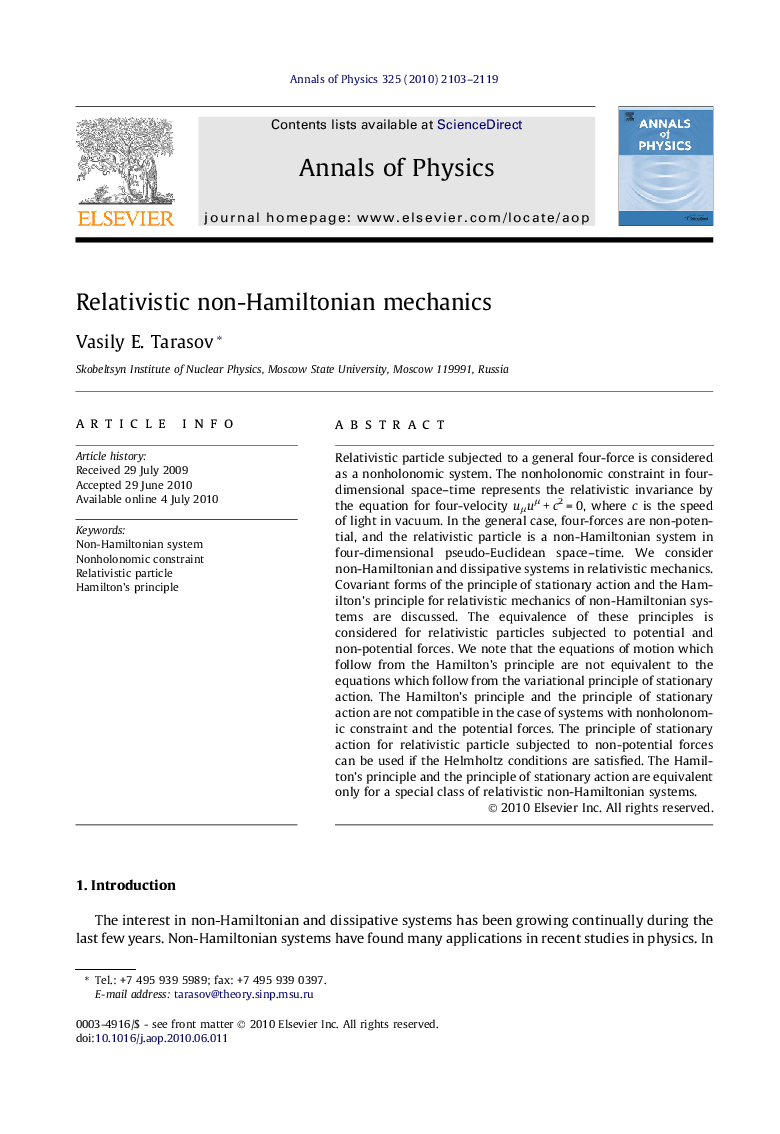| Article ID | Journal | Published Year | Pages | File Type |
|---|---|---|---|---|
| 1857543 | Annals of Physics | 2010 | 17 Pages |
Abstract
Relativistic particle subjected to a general four-force is considered as a nonholonomic system. The nonholonomic constraint in four-dimensional space-time represents the relativistic invariance by the equation for four-velocity uμuμ + c2 = 0, where c is the speed of light in vacuum. In the general case, four-forces are non-potential, and the relativistic particle is a non-Hamiltonian system in four-dimensional pseudo-Euclidean space-time. We consider non-Hamiltonian and dissipative systems in relativistic mechanics. Covariant forms of the principle of stationary action and the Hamilton's principle for relativistic mechanics of non-Hamiltonian systems are discussed. The equivalence of these principles is considered for relativistic particles subjected to potential and non-potential forces. We note that the equations of motion which follow from the Hamilton's principle are not equivalent to the equations which follow from the variational principle of stationary action. The Hamilton's principle and the principle of stationary action are not compatible in the case of systems with nonholonomic constraint and the potential forces. The principle of stationary action for relativistic particle subjected to non-potential forces can be used if the Helmholtz conditions are satisfied. The Hamilton's principle and the principle of stationary action are equivalent only for a special class of relativistic non-Hamiltonian systems.
Related Topics
Physical Sciences and Engineering
Physics and Astronomy
Physics and Astronomy (General)
Authors
Vasily E. Tarasov,
